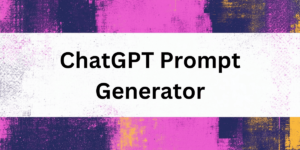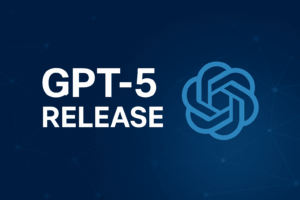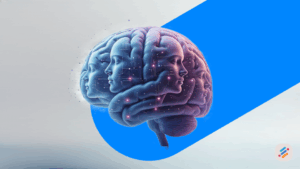In a significant leap forward for artificial intelligence capabilities, OpenAI has unveiled “Deep Research,” a groundbreaking feature within ChatGPT that promises to transform how we approach research tasks. This innovative tool represents a major advancement in AI-assisted research, offering autonomous, comprehensive analysis capabilities that could reshape how professionals and researchers work.
The Power of Autonomous Research
ChatGPT Deep Research isn’t just another incremental update – it’s a fundamental shift in how AI can assist with complex research tasks. Powered by OpenAI’s latest o3 AI model, this feature can independently conduct multi-step research projects, analyzing and synthesizing information from diverse online sources. What’s particularly impressive is its ability to deliver detailed reports in just 10 to 30 minutes, a task that might take humans hours or even days to complete.
The system’s flexibility is noteworthy: users can initiate research through various input formats, including text, images, and files. This versatility makes it an invaluable tool across different professional contexts and research scenarios.
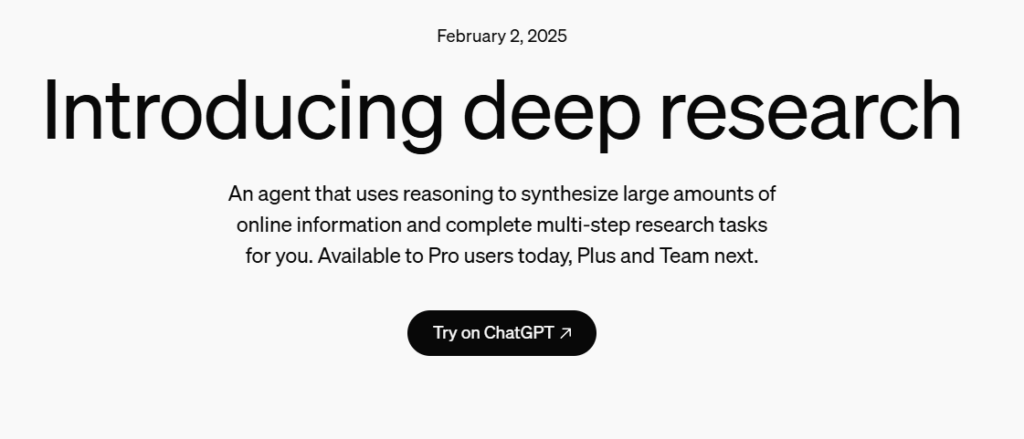
A Professional's New Best Friend
For professionals in fields like finance, science, and engineering, ChatGPT Deep Research represents more than just a time-saving tool – it’s a potential game-changer. By automating the often tedious process of gathering and synthesizing information, it frees up valuable time for what truly matters: high-level analysis and strategic decision-making.
The system generates comprehensive reports complete with summaries and citations, ensuring that users can trace information back to its sources. This transparency is crucial for maintaining professional standards and credibility in research-intensive fields.
Accessibility and Investment
OpenAI has initially rolled out ChatGPT Deep Research to Pro subscribers in the United States, with plans to expand its availability to mobile and desktop platforms. The service, priced at $200 monthly for Pro users, includes up to 100 queries per month – a significant investment that reflects the tool’s professional-grade capabilities.
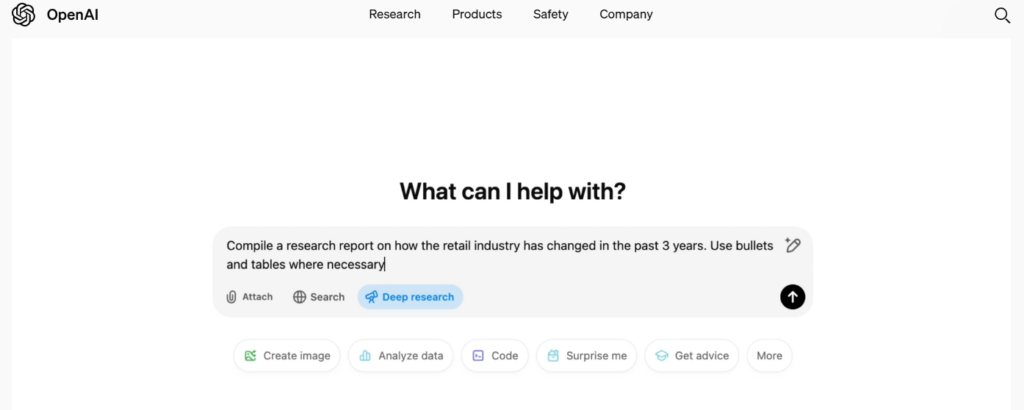
How to Use ChatGPT Deep Research
To get started with Deep Research in ChatGPT, simply select the “Deep Research” option in the message composer and enter your query. Whether you’re looking for a competitive analysis on streaming platforms or a detailed report on the best commuter bike, you can specify exactly what you need. If you have relevant files or spreadsheets, you can attach them to provide additional context.
Once Deep Research begins, a sidebar will appear, summarizing the steps taken and listing the sources used. The process can take anywhere from 5 to 30 minutes, depending on the complexity of the query. During this time, you’re free to step away or focus on other tasks—you’ll receive a notification once the research is complete.
The final output is delivered as a structured report within the chat. In the coming weeks, OpenAI plans to enhance these reports with embedded images, data visualizations, and other analytical outputs for added clarity and depth.
While GPT-4o excels at real-time, multimodal conversations, Deep Research is best suited for in-depth, domain-specific inquiries. Unlike a quick summary, Deep Research offers extensive exploration, source citations, and well-documented findings, making it a powerful tool for producing credible and detailed work products.
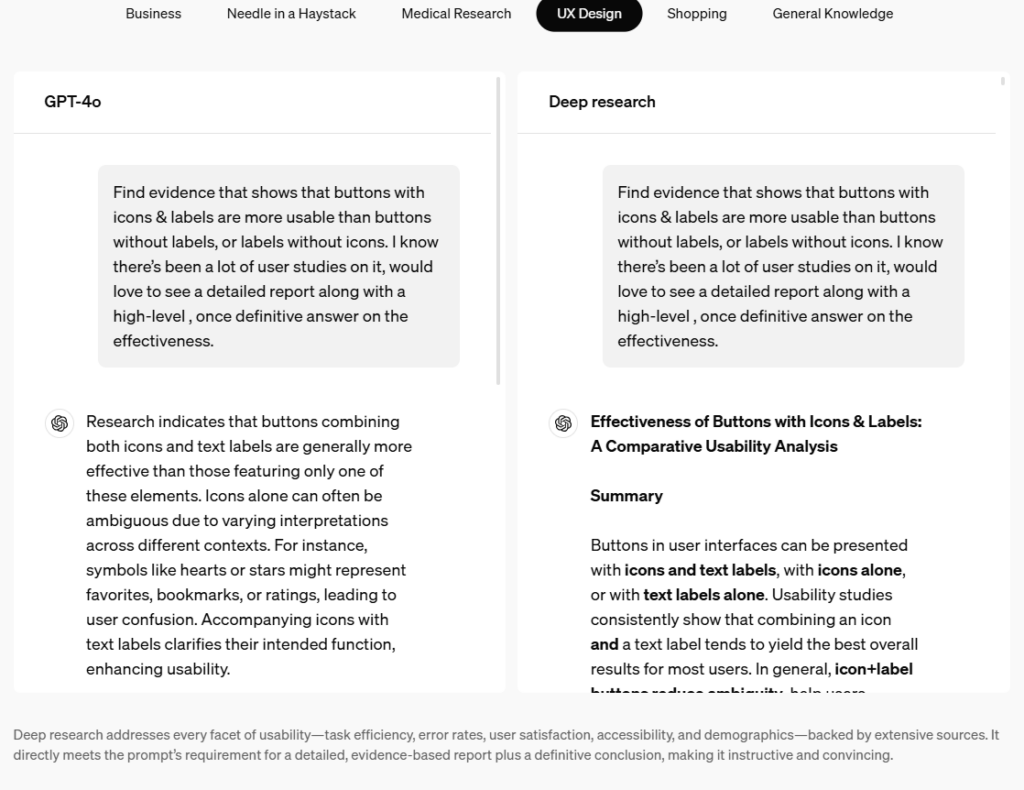
Humanity's Last Exam
Recent evaluations have provided compelling evidence of Deep Research’s capabilities through “Humanity’s Last Exam,” a comprehensive assessment designed to measure artificial intelligence performance across expert-level domains. The model underlying Deep Research has achieved a significant milestone, securing a 26.6% accuracy rate—a new benchmark in AI performance evaluation.
The examination’s scope is particularly noteworthy, encompassing more than 3,000 questions that span both multiple-choice and short-answer formats. These questions traverse over 100 distinct academic disciplines, from the intricacies of linguistics to the complexities of rocket science, and from classical studies to modern ecological research. This breadth of subject matter provides a robust framework for assessing the model’s true capabilities.
When compared to its predecessor, OpenAI o1, the model demonstrates marked improvements across several key disciplines. The most substantial advances are evident in chemistry, humanities and social sciences, and mathematics. Perhaps most significantly, the model exhibits sophisticated problem-solving behaviors that mirror human cognitive processes, particularly in its ability to identify knowledge gaps and actively seek specialized information when confronted with complex queries.

Expert-Level Performance
In internal assessments of complex expert-level tasks across various fields, domain experts found that Deep Research successfully automated multiple hours of challenging, manual investigation.
This statement means that OpenAI tested Deep Research on complex, expert-level tasks in different professional fields. They asked specialists in those fields to evaluate its performance. The results showed that Deep Research was able to automate tasks that would normally take experts several hours to complete manually.
For example, if a financial analyst needed to conduct a competitive market analysis, they would typically spend hours gathering and verifying data. Deep Research, however, could do this work automatically, significantly reducing the time and effort required.
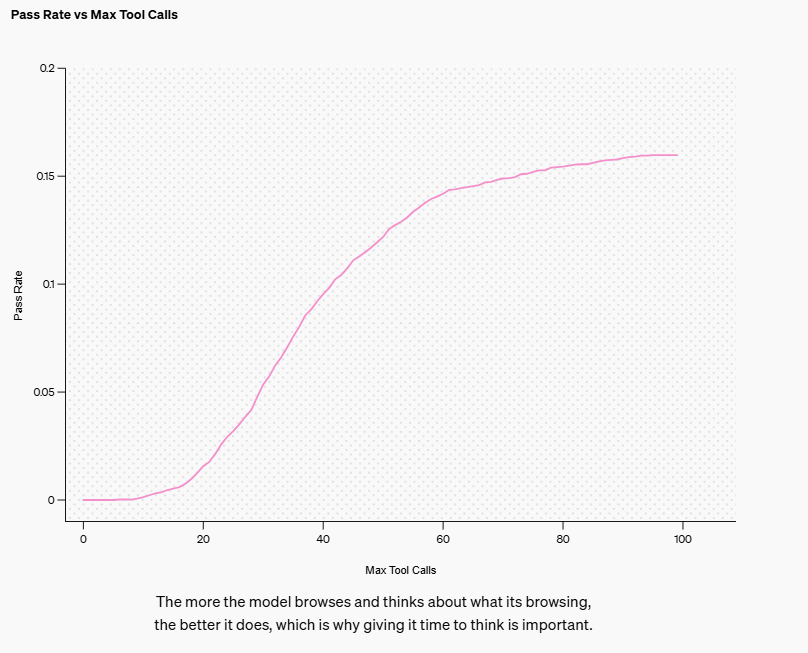
ChatGPT Deep Research's limitations
While ChatGPT Deep Research represents a major advancement, it’s essential to approach it with a measured perspective. OpenAI has been refreshingly transparent about the system’s limitations. The AI can sometimes struggle to differentiate between authoritative information and unverified claims, and it may not always effectively communicate uncertainty in its findings.
This transparency serves as a crucial reminder: Deep Research should be viewed as a powerful assistant rather than a replacement for human judgment. Professional users should maintain their critical thinking skills and verify AI-generated outputs, especially for decisions with significant consequences.
The Future of ChatGPT Deep Research
Deep Research marks a significant milestone in the evolution of AI-assisted research tools. Its ability to autonomously conduct comprehensive research while maintaining transparency through citations and source tracking sets a new standard for what we can expect from AI systems.
As the tool continues to evolve and becomes more widely available, we’ll likely see its impact across various professional sectors. The key to maximizing its potential lies in understanding both its capabilities and limitations, using it as part of a broader research strategy that combines AI efficiency with human insight and expertise.
For professionals looking to stay ahead in their fields, Deep Research represents an opportunity to enhance their research capabilities significantly. While it’s not a magic solution to all research challenges, it’s a powerful tool that, when used thoughtfully, can dramatically improve the efficiency and depth of research processes.
The future of research is here, and it’s more intelligent, faster, and more comprehensive than ever before. As we continue to explore the possibilities of AI-assisted research, tools like ChatGPT Deep Research will undoubtedly play a crucial role in shaping how we discover, analyze, and apply information in our professional lives.
Update – February 3, 2025
OpenAI has conducted extensive safety testing and governance reviews on the early version of the o3 model powering Deep Research, classifying it as Medium risk. Additional evaluations focused on potential risks from web browsing, leading to the introduction of new safety measures.
As Deep Research remains in limited release, OpenAI is closely monitoring and refining its safeguards. When access expands to ChatGPT Plus users, a system card will be published, outlining key safety insights and protective measures.







